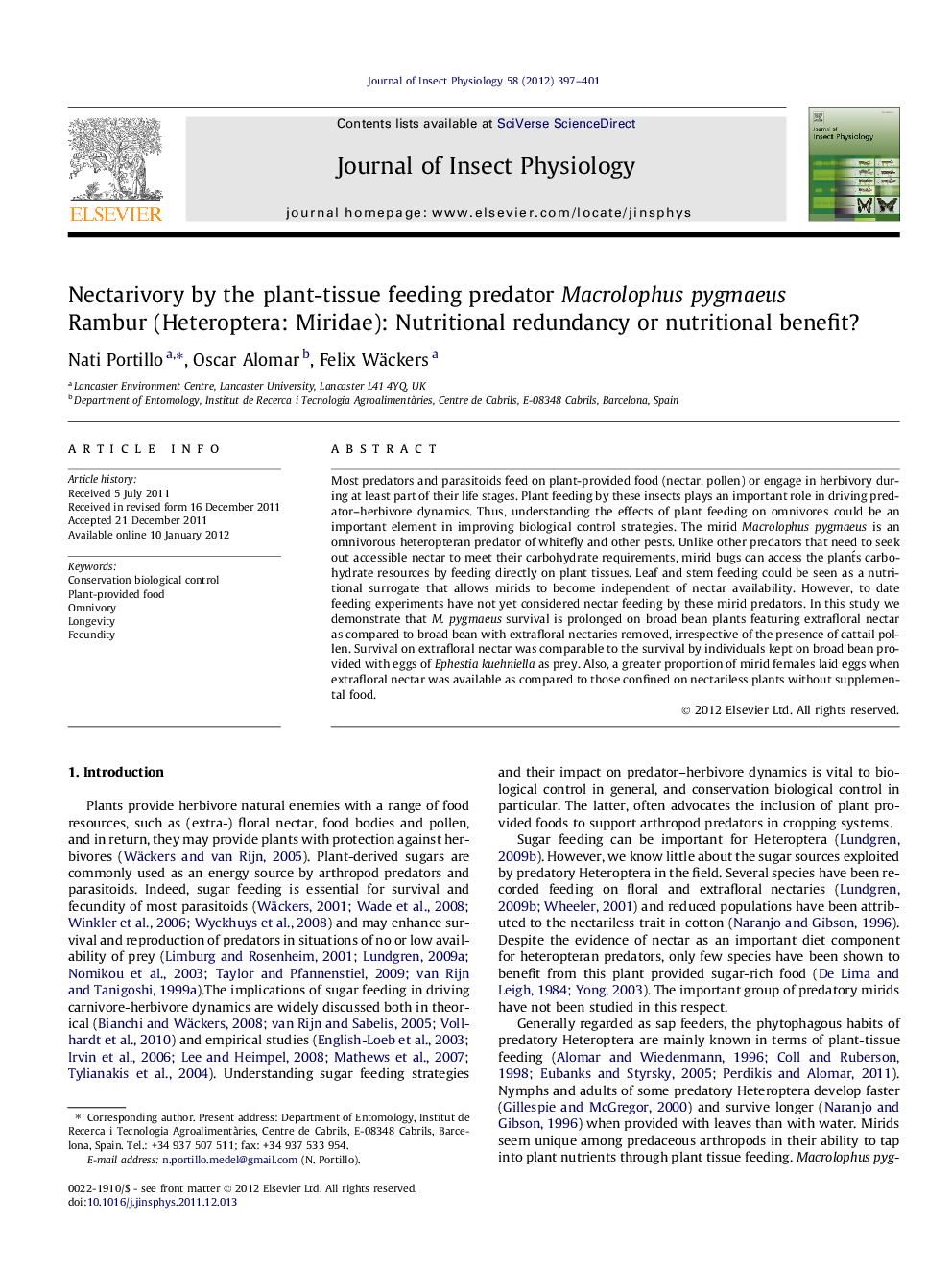| کد مقاله | کد نشریه | سال انتشار | مقاله انگلیسی | نسخه تمام متن |
|---|---|---|---|---|
| 2840672 | 1165346 | 2012 | 5 صفحه PDF | دانلود رایگان |

Most predators and parasitoids feed on plant-provided food (nectar, pollen) or engage in herbivory during at least part of their life stages. Plant feeding by these insects plays an important role in driving predator–herbivore dynamics. Thus, understanding the effects of plant feeding on omnivores could be an important element in improving biological control strategies. The mirid Macrolophus pygmaeus is an omnivorous heteropteran predator of whitefly and other pests. Unlike other predators that need to seek out accessible nectar to meet their carbohydrate requirements, mirid bugs can access the plant´s carbohydrate resources by feeding directly on plant tissues. Leaf and stem feeding could be seen as a nutritional surrogate that allows mirids to become independent of nectar availability. However, to date feeding experiments have not yet considered nectar feeding by these mirid predators. In this study we demonstrate that M. pygmaeus survival is prolonged on broad bean plants featuring extrafloral nectar as compared to broad bean with extrafloral nectaries removed, irrespective of the presence of cattail pollen. Survival on extrafloral nectar was comparable to the survival by individuals kept on broad bean provided with eggs of Ephestia kuehniella as prey. Also, a greater proportion of mirid females laid eggs when extrafloral nectar was available as compared to those confined on nectariless plants without supplemental food.
Figure optionsDownload as PowerPoint slideHighlights
► Macrolophus pygmaeus can tap into plant carbohydrates through plant-tissue feeding.
► We studied if plant-tissue feeding is a suitable alternative to nectar consumption.
► Survival in prey-free plants was enhanced by the presence of extrafloral nectar.
► A greater proportion of females laid eggs when extrafloral nectar was available.
Journal: Journal of Insect Physiology - Volume 58, Issue 3, March 2012, Pages 397–401